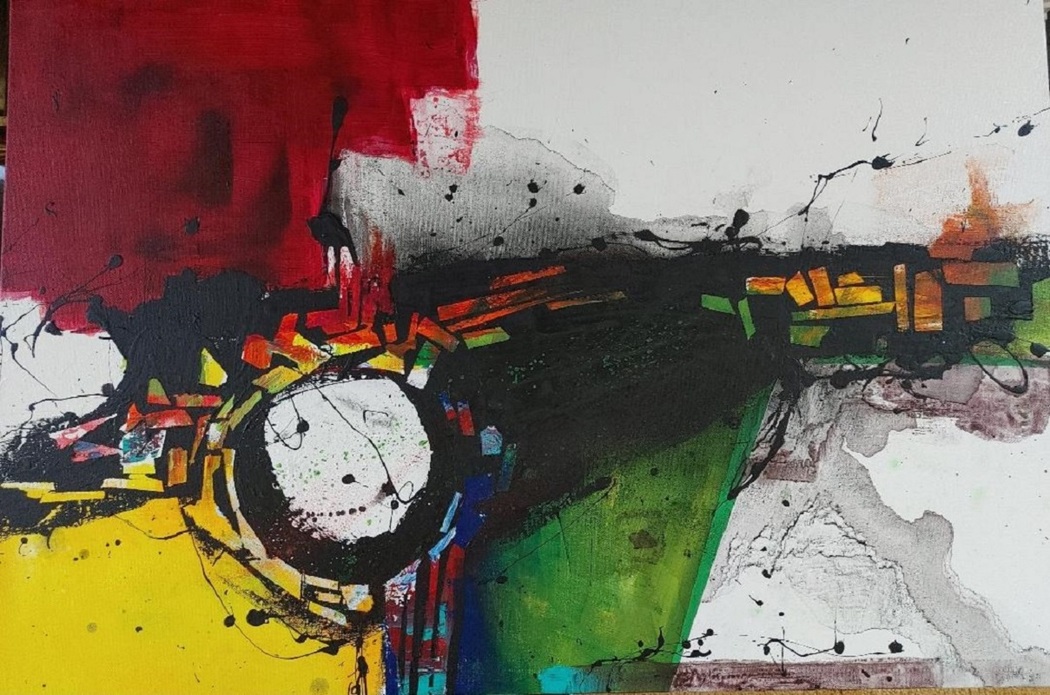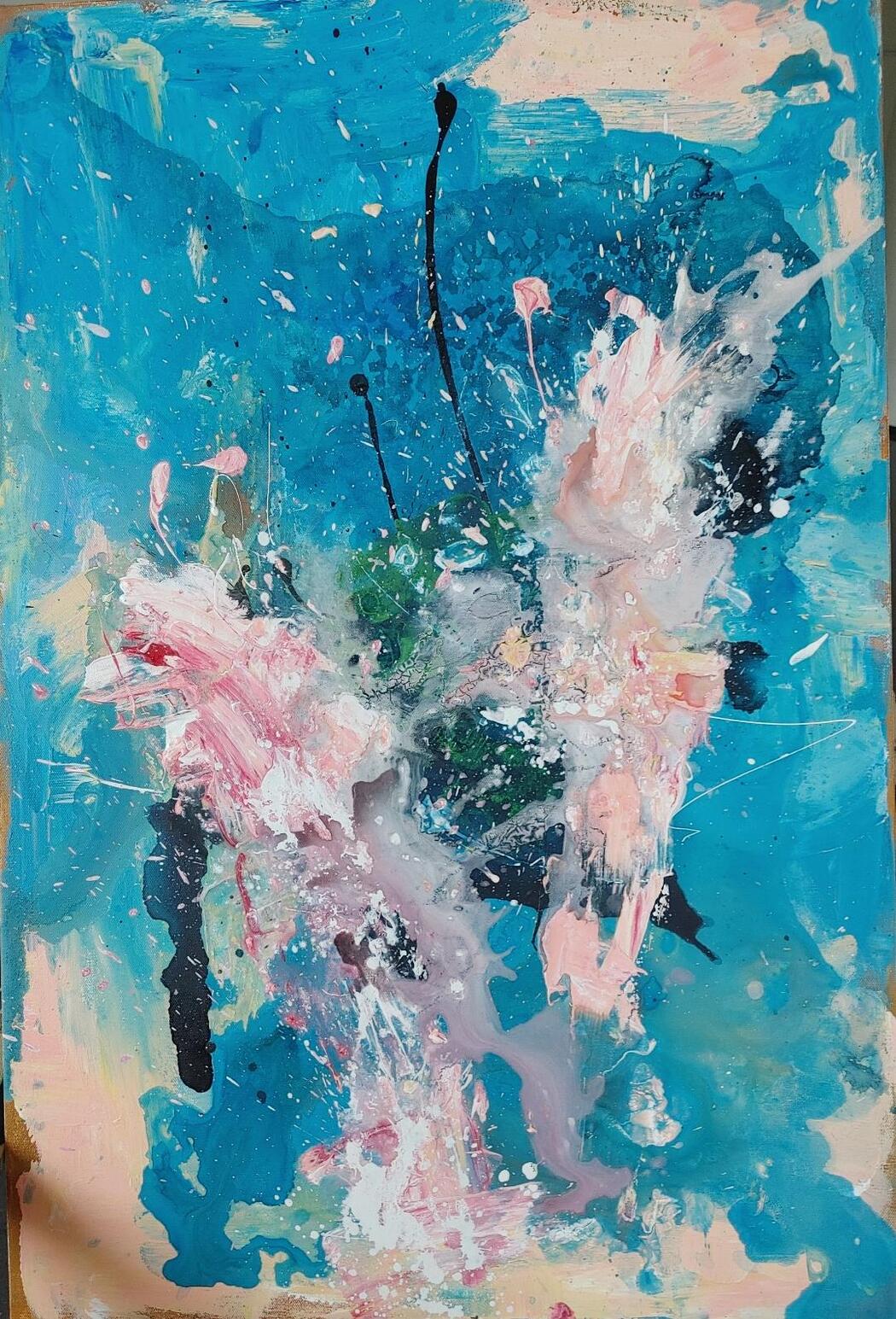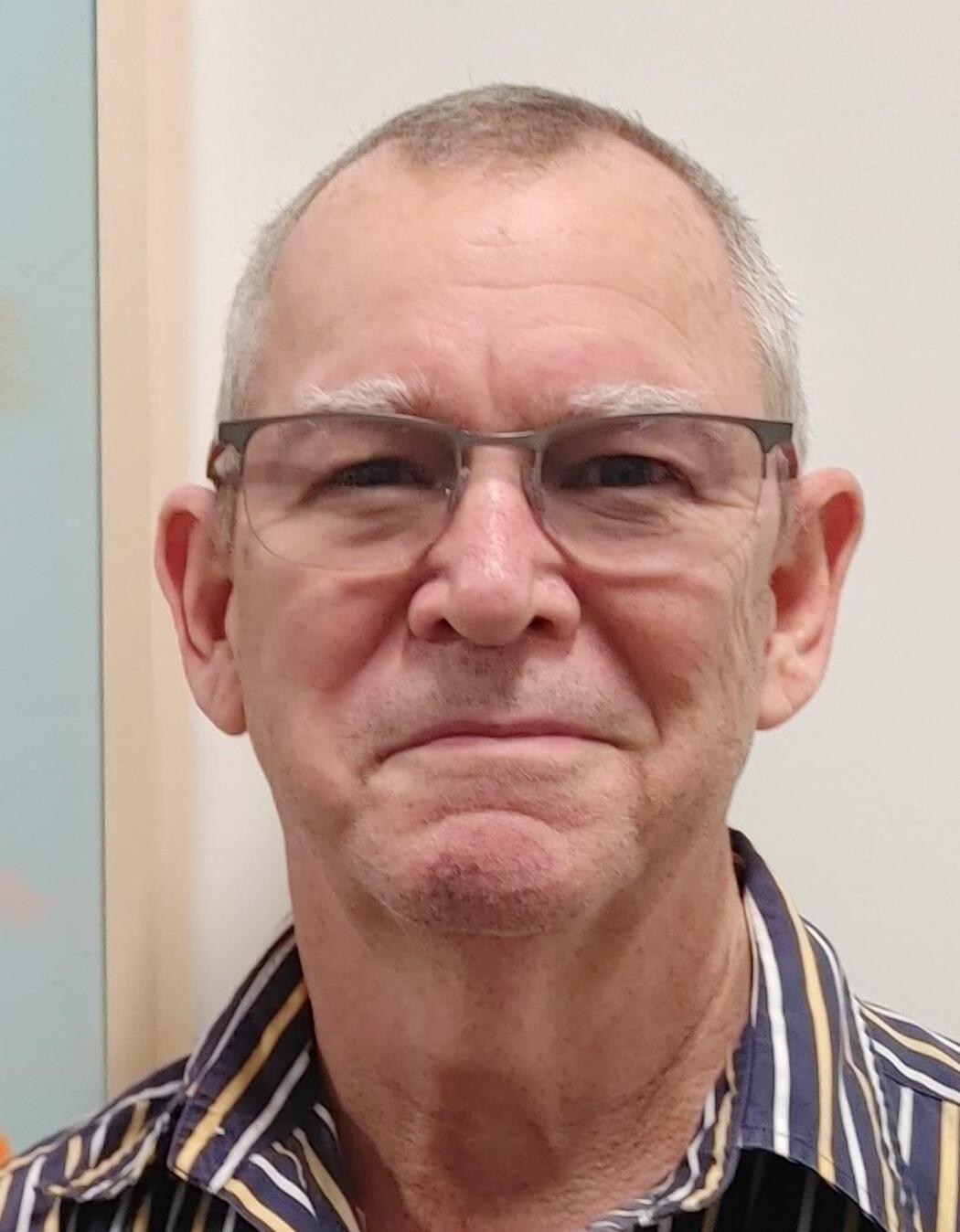Steven Sickles
Where do you live: Indianapolis, Indiana.
Your education: B.A. in Fine Art with a minor in Art History from Rhode Island College; Associate’s degree in Computer Science.
Describe your art in three words: Art is Round.
Your discipline: I have none. I’m not one who makes himself paint every day. Forced work rarely turns out well. Sometimes I go for weeks from lack of a good idea. At other times I paint incessantly when the ideas just keep coming. There’s a great quote from Andy Warhol. When he was asked why he started doing self portraits, again, after avoiding it for years. He said, “I ran out of ideas”. It’s true. You always have you.
Website | Instagram
Your work resists recognizable imagery and embraces spontaneity. What draws you to abstraction as your primary form of expression?
I find abstraction a more difficult way of working and I enjoy the challenge. Of course, there are many ways of rendering a still life or a portrait but with abstraction the composition, shapes, colors, and way of applying paint are limitless. The only way to consider an abstract painting a success is how long it holds the viewers’ attention.
In your painting ‘Eroica’, vibrant colors and dynamic textures dominate the canvas. What emotions or ideas were you exploring while creating the piece?
A characteristic within the body of my work is my passion for drama. At the time of this painting’s execution, I happened to be listening to Beethoven’s third symphony commonly called ‘Eroica’ (translated: ‘Heroic’ symphony). As such, it’s easy to see the red as blood and the circulating geometric shapes as scrapnel. I try to avoid suggesting what my paintings are about by naming them after whatever music I happen to be listening to, in this case the choice may be considered unfortunate. Really, I was simply trying to create a vortex around the white circular form. But despite my intentions I believe I was subconsciously more directly influenced by the music than I realized.

Steven Sickles | Eroica
You’ve lived across diverse places-from California to New Jersey, San Francisco to Indianapolis. How have these different environments influenced your artistic voice?
In New Jersey before I attended college, I worked in the style of my favorite masters borrowing heavily from Rembrandt, Degas, Michealangelo and Disney. I worked primarily in oils at the time. When I moved to San Francisco, I attended a weekly nude sketch drawing group where my medium of choice became India ink. At other times, I amused myself painting flowers and dog protraits primarily in watercolors. After meeting my husband, he suggested I begin creating abstract work using acrylic paint. After that there was no turning back.
You describe your process as intuitive and evolving. Can you walk us through a typical painting session? What usually sparks the first move on a blank canvas?
The first move on a blank canvas usually starts with an idea that occurred to me while taking a walk or just before falling asleep. I’m often inspired by nature.
Asian characters are a constant inspiration. The way a shadow of a tree falls across a rock or currently how rain soaked tree limbs take on a surrealist Franz Kline look can suggest an interesting painting. But very rarely doesn my original notion bear any resemblance to the finished work. My plan can change when something I original thought would be intriguing turns out to be disconnected to the rest of the painting or simply seems juvenile or ill-conceived.
Then you have three choices: A.) remove the culprit, B.) keep it and try to return harmony to the painting or C.) start over completely. Usually before the latter is a period of complete experimentation. It can work out well offering a new direction or I might just create an enormous mess. At this point you have to decide which accidents to keep and which have to go.
 Steven Sickles | Black Hole Sun
Steven Sickles | Black Hole Sun
You mentioned using everything from brushes and spatulas to your hands. How important is physicality and tactile experience in your creative process?
Many of my paintings have a smeared effect usually achieved by allowing the paint I’ve applied to dry for a while. Once the paint’s in this state I might use the heal of my hand to get an atmospheric effect by dragging the paint across the canvas surface. I wouldn’t say I use this technique often. I use it only when it occurs to me to be necessary or when the same effect cannot be achieved with a brush or anything else I might find in my studio. I don’t think of it being more important than any other method only sometimes more effective.
Your collaboration with jazz saxophonist Sophie Faught is fascinating. How did this project come about, and what did it reveal to you about the relationship between sound and image?
Sophie was working in a bookstore which helped adults who could not read. I had a small show there. She phoned me one day to see if we could meet. She had a project in mind. I thought that maybe she wanted me to design a CD cover. But, instead, she wanted to go forward with the plan to create an LP with compositions inspired by my paintings. Would it be OK with me? Would anyone on earth ever say ‘No!’? So she and her band members looked at a lot of paintings and chose which ones they wanted to use as inspiration.
There has always been a link betwen music and the visual arts. So many artists from Vermeer to Corravagio to Basquiat have been inspired by music. The most famous example is the link between Matisse’s and his Jazz series of cut-outs.
This project was the most rewarding of any I’ve been a part of as an artist.
 Steven Sickles | Incidents and Accidents
Steven Sickles | Incidents and Accidents
Many abstract artists struggle with the moment of completion. How do you know when a painting is finished?
Man! Have you hit on a persistent problem. It’s very important while you’re working to take repeated steps back to better analyze what you’re doing. Too often artists plow ahead with their original plan only to find what they’ve done is over worked. The easy answer to this question is to stop when you can’t think of anything further to do to make your work better. But that’s easier said than done. My strategy is to banish my paintings to the basement when I think it needs work. This gives me time to consider how to fix it. More often than not after a few months I say to myself, “What did I think was wrong with this?”

Steven Sickles | Aladdin Sane


Leave a Reply